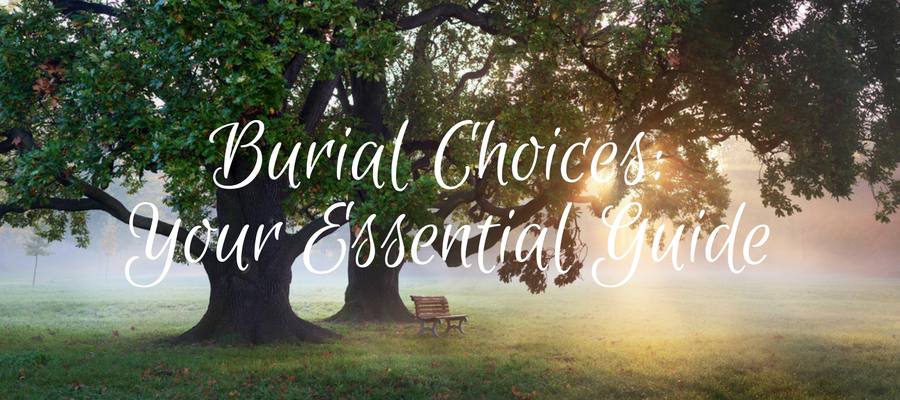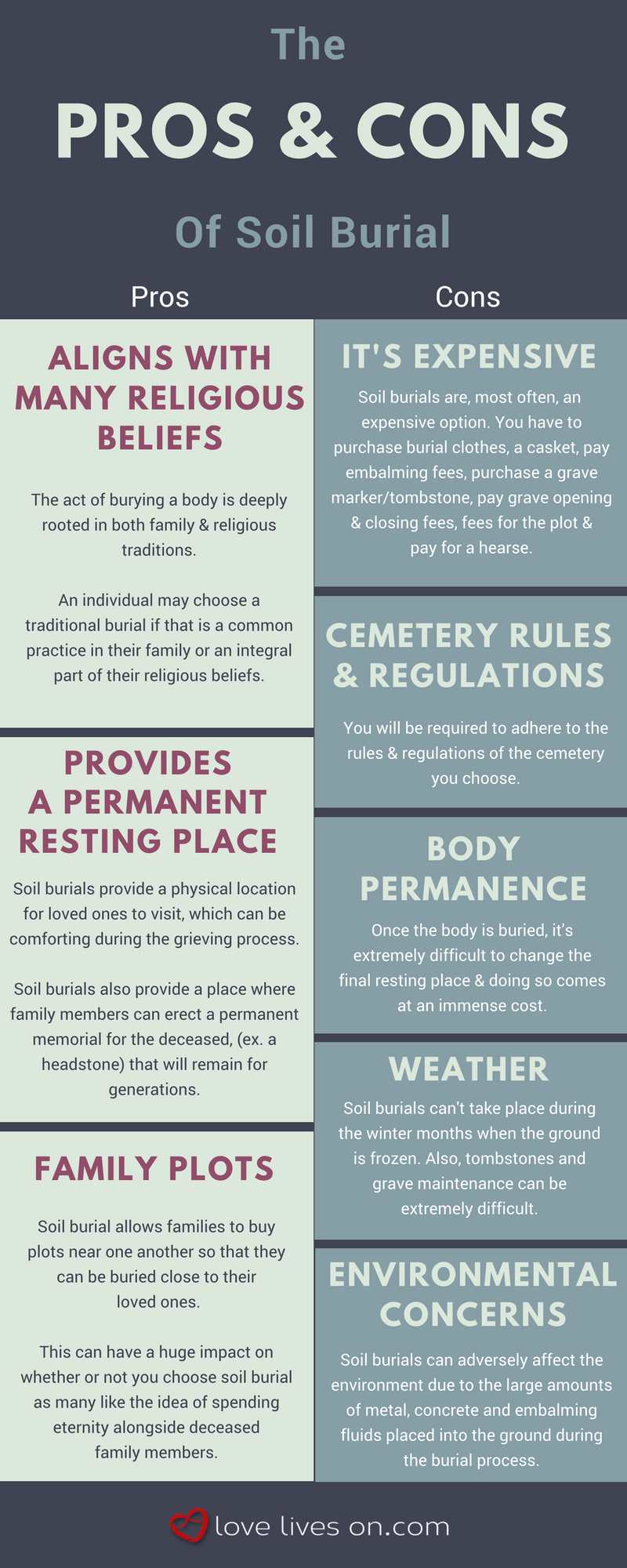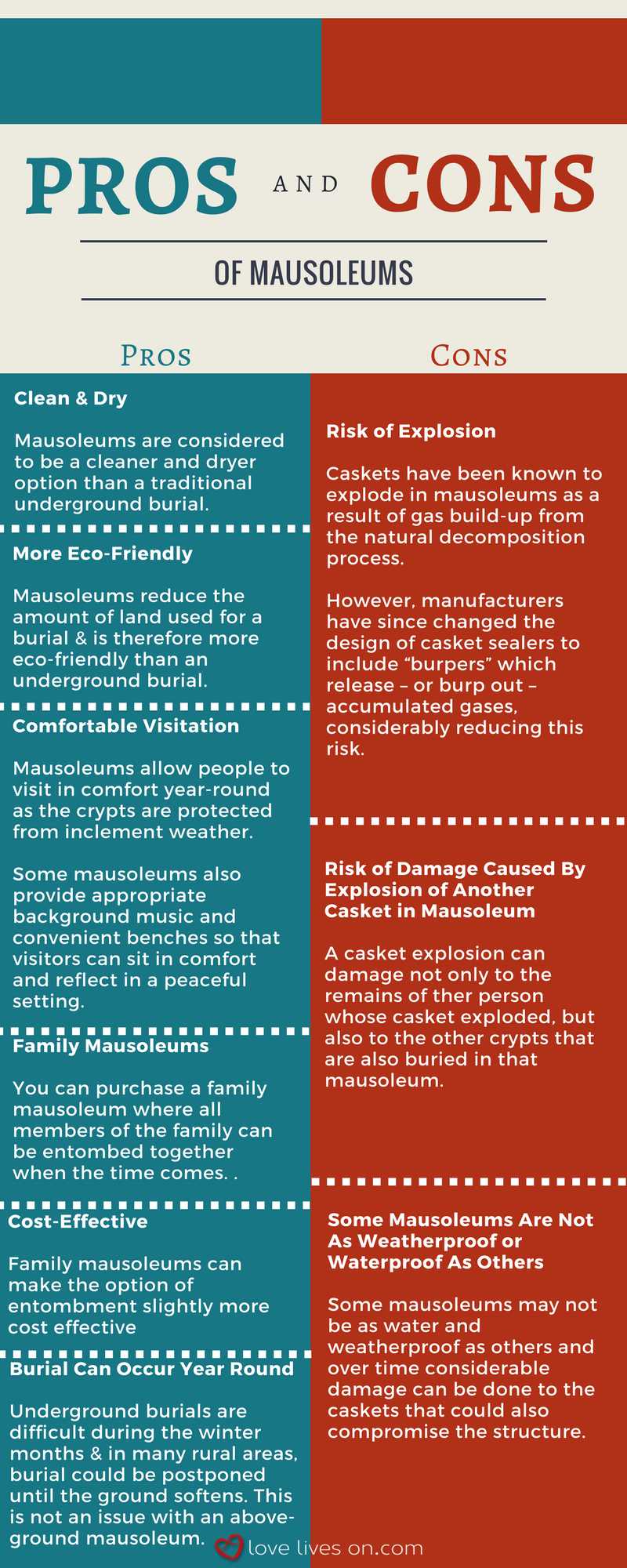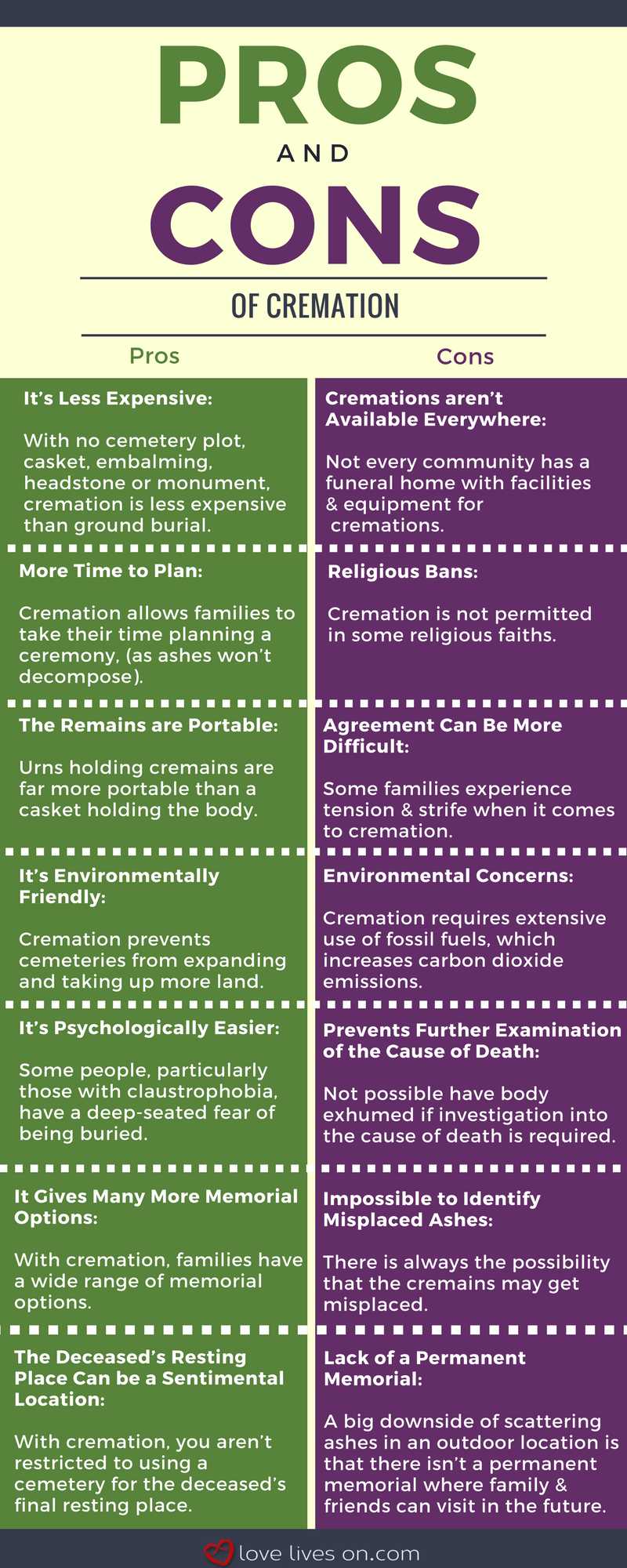
In the past, funeral planning mostly involved a traditional burial. However, today, there are more burial options available, beyond a traditional burial.
There are many options to consider when deciding what should be done with your body after your death.
The three most common methods for body disposition include: a traditional burial, permanent storage in a tomb or mausoleum, and cremation. Body disposition is the technical term for the process of dealing with the remains of a deceased human being.
A burial is when the entire body is embalmed, encased in a coffin or casket, and then buried in the ground.
Permanent storage in a tomb or burial chamber (often referred to as a mausoleum), means that the entire body or cremated remains are stored in an above ground tomb or mausoleum.
Cremation is the process of burning a dead body and completely reducing it to ash. The ashes can then be stored in an urn or scattered on land or at sea.
There are advantages and disadvantages for each method of disposition. This article will provide details on what you need to know to help decide which option is right for you.
We’ve also included a few helpful infographics summarizing the pros and cons of each method of disposition soil burial, entombment in a mausoleum and cremation.
What You Need to Know About Soil Burial
A traditional soil burial is when a body is embalmed and then buried underground in a coffin or casket.
Although embalming is not a legal requirement in Canada, some provinces require embalming or sealing of bodies that will not reach their place of burial within 72 hours of the death.
Advantages of Soil Burial
The act of burying a body is deeply rooted in both family and religious traditions. An individual may choose a traditional burial if that is a common practice in their family or an integral part of their religious beliefs.
Soil burials also provide a physical location for loved ones to visit, which can be comforting during the grieving process.
A soil burial also provides a place where the family can erect a permanent memorial for the deceased, for example a headstone that will remain for generations.
A soil burial also allows families to buy plots near one another so that they can be buried close to their loved ones.
You may have already chosen a soil burial because you want to spend eternity alongside your deceased family members.
Disadvantages of Soil Burial
The most significant disadvantage of a soil burial is that they are, most often, much more expensive.
These costs will include purchasing burial clothes, a casket (ranging from $345 to $12,000), embalming fees (ranging from $225 to $1,200), grave marker or tombstone (ranging from $500 to $7,000), grave opening and closing fees ($300 to $1,000), a grave plot ($400 to $10,000), and a hearse ($150 to $530).
Another disadvantage of soil burial is that you will be required to adhere to the rules and regulations of the cemetery you choose.
This includes rules governing the type of tombstone or monument you wish to erect, the care and maintenance of the plot, what is permitted on the plot (e.g. solar lights, fencing), and the type of trees, shrubs or flowers that can be left on the gravesite.
If soil burial is chosen, it is important to understand the issue of body permanence. Once the body is buried, it is extremely difficult to change the final resting place and doing so comes at an immense cost.
If the family of the deceased were to move away, this permanence can be a significant issue.
During the harsh winter months, especially in Canada, tombstones and grave maintenance can be extremely difficult.
Furthermore, soil burials cannot take place during the winter months when the ground is frozen.
Therefore, if a loved one passes away during the winter, their actual burial cannot take place until the spring when the ground has thawed. This can prolong the funeral process and a sense of closure for loved ones.
Soil burials can adversely affect the environment due to the large amounts of metal, concrete and embalming fluids that are placed into the ground during the burial process.
(Click infographic to enlarge)
Like our infographic? Use it on your site by copying this code:
What You Need to Know About Mausoleums
Mausoleums are above-ground structures that are specially designed to hold the remains of deceased individuals. Deceased individuals are held in crypts, or chambers, within the mausoleum.
The mausoleum may be a private mausoleum holding only one individual or a shared mausoleum where families can be held together.
Advantages of Mausoleums
Mausoleums are clean, dry, ventilated chambers that protect the remains of your loved one as opposed to a traditional burial that will expose the remains to a damp, cool underground environment.
Mausoleums appeal to many people who do not want to be cremated or who are apprehensive about being buried underground.
Mausoleums reduce the amount of land that is used for a burial and is therefore more ecologically friendly than an underground burial. They may attract people who are greener at heart.
Mausoleums allow for family and friends to visit in comfort all year-round as they are protected from inclement weather.
Some provide music and couches which allow for a peaceful and calming environment while you visit your loved one.
Mausoleums are quite common and many cemeteries provide single, companion, or family options. This provides the opportunity to purchase a mausoleum where all family members can be entombed, making this option more cost effective.
Disadvantages of Mausoleums
If you are considering entombment in a mausoleum, there are some important matters that you need to consider. There have been known cases of “casket failure”.
As a body decomposes there are many chemical reactions. These chemical reactions may cause the casket to rust from the inside, which then releases the decomposing bodily fluids.
Before purchasing a crypt you should ask if the mausoleum is well-constructed; if the crypts are well-ventilated; what is the mausoleum’s policy on sealed caskets (partially opening caskets will allow for air flow); how the building is maintained; and how will future maintenance needs be funded.
The cost of entombment in a crypt is very similar to the cost of a traditional burial and will require many of the same expenditures. You could spend upwards of $4,000 on this type of burial arrangement.
(Click infographic to enlarge)
Like our infographic? Use it on your site by copying this code:
What You Need to Know About Cremation
Cremation is the process of burning a dead body and completely reducing it to ash. The ashes can then be stored in an urn or scattered in a place that is significant to the deceased and their family.
Advantages of Cremation
As a burial option, cremation has a number of advantages. In general, cremation costs are much lower than a traditional burial or a mausoleum. Cremation, as a burial option, can cost as little as $1,000.
Cremation offers much more flexibility for family members who are planning your funeral services. The time of year you will be cremated or when disposal of your ashes will occur is not as limiting as it is for a traditional burial.
Cremation is also more ecologically friendly, with minimal harm to ecosystems or the environment through this process.
Disadvantages of Cremation
Although cremation uses fewer resources than traditional burials, crematoriums do release a considerable amount of carbon dioxide and pollution into the atmosphere.
The process of cremation is often criticized for not providing family members with a formal place to mourn the loss of their loved one. When the ashes are scattered, family members often lack a sense of closure as they have no fixed place to visit to mourn their loss.
In some religions, cremation is forbidden. Therefore, it is not an option for everyone.
Muslim, Greek, Jewish Orthodox, and some fundamentalist Protestant faiths do not permit cremation.
Cremation can also be difficult for some family members, especially if they practice traditional religious faiths. This can cause some disagreement about whether or not cremation should be an option.
Arguments can be avoided by pre-planning your funeral and outlining your burial wishes so that family members are not charged with making this decision for you.
(Click infographic to enlarge)
Like our infographic? Use it on your site by copying this code:
The Choice is Yours
It is important to know the different burial options that are available to you. By understanding the advantages and disadvantages of each option you will be able to make an informed decision about which burial option is right for you or your loved one.
How you will be buried once you die is a very important and personal decision. Research your options, make arrangements ahead of time, and share this plan with your family members.
You do not want disagreements to arise as family members try to decide what kind of burial option you would have wanted.
~

Related Articles

By pre-planning your funeral and sharing your burial plan with your family you can eliminate the stress and tension that those planning your funeral experience when trying to make this decision for you.
If you are tasked with determining the burial option for a loved one, consider their religious background, the burial options of their family members, and whether they ever expressed wishes favouring soil burial, entombment, or cremation.
What are your thoughts on the different choices available when it comes to burial?
Follow our Pinterest board for more resources on cemeteries and soil burial.






